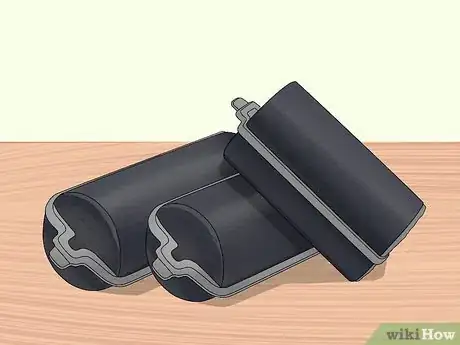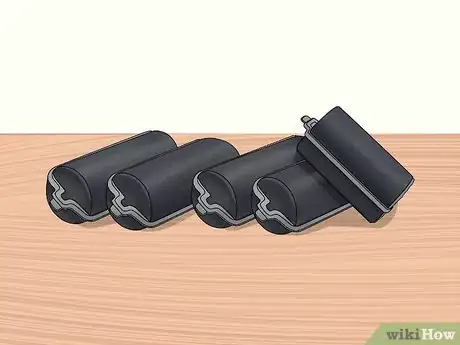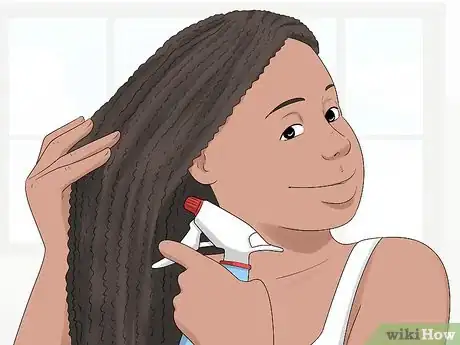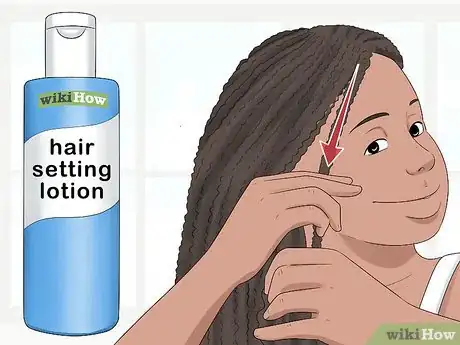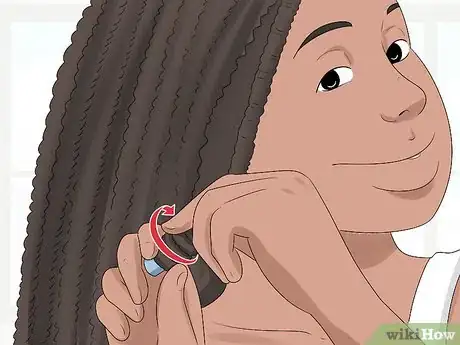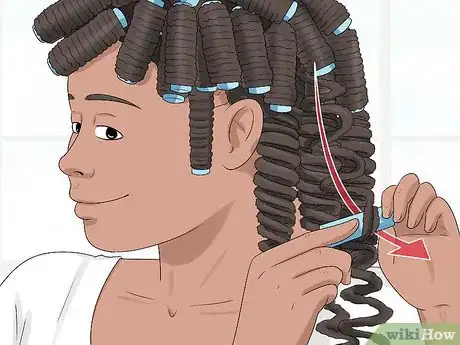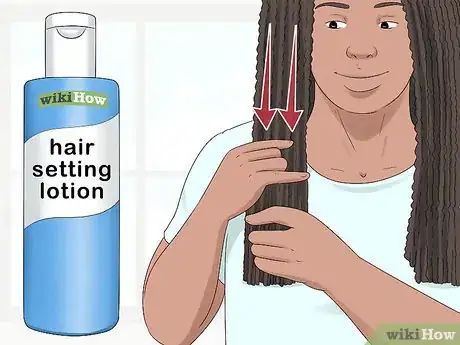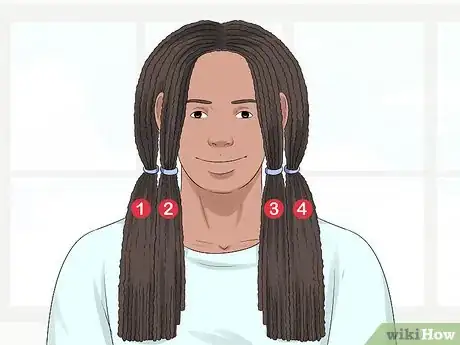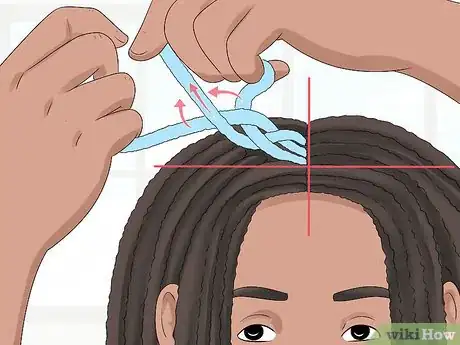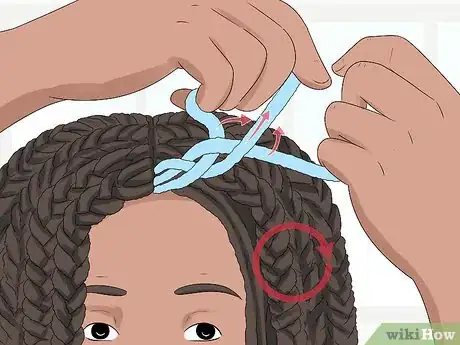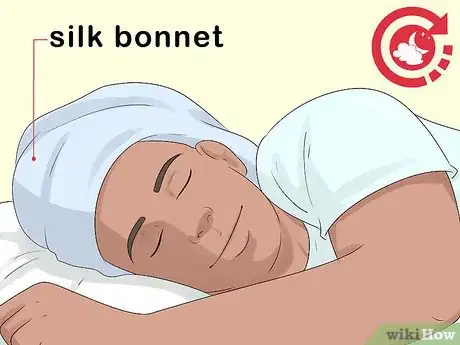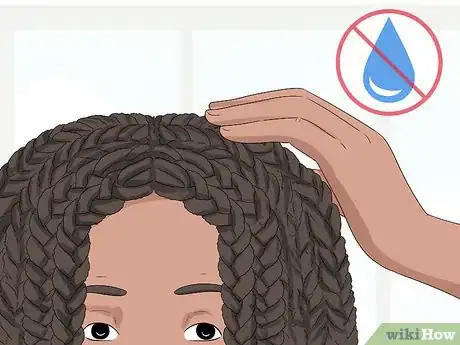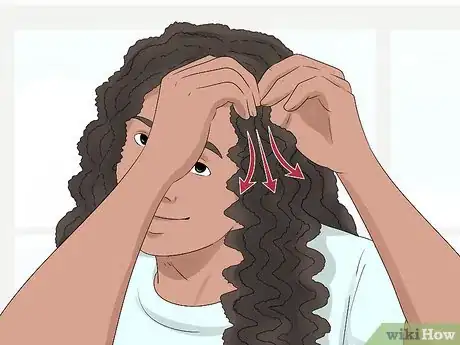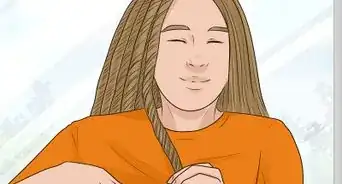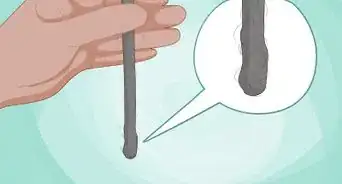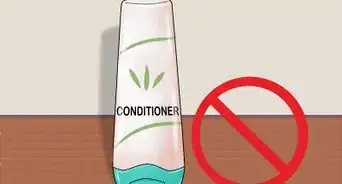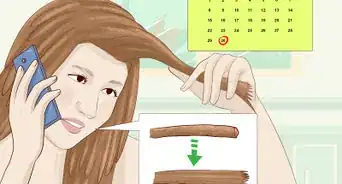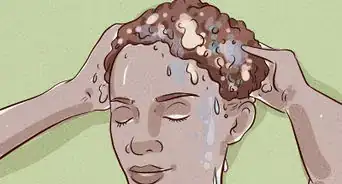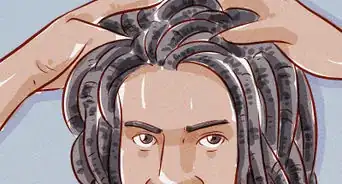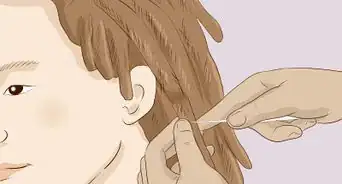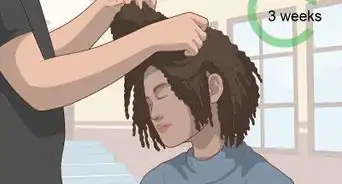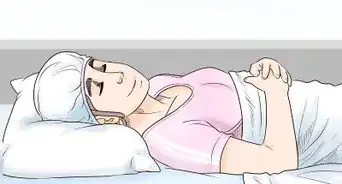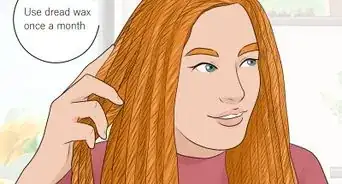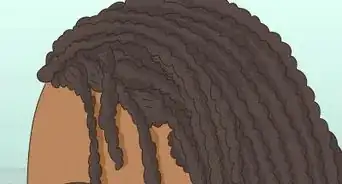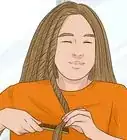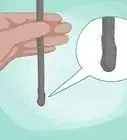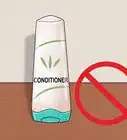This article was co-authored by Courtney Foster. Courtney Foster is a Licensed Cosmetologist, Certified Hair Loss Practitioner, and Cosmetology Educator based out of New York City. Courtney runs Courtney Foster Beauty, LLC and her work has been featured on The Wendy Williams Show, Good Morning America, The Today Show, The Late Show with David Letterman, and in East/West Magazine. She received her Cosmetology License from the State of New York after training at the Empire Beauty School - Manhattan.
This article has been viewed 79,452 times.
Dreadlocks are a great low-maintenance hairstyle, but what if you want to change up your look? Whether you’ve had your dreadlocks for years or just a few months, you can curl your dreads for a cool new style. By using sponge rollers or braiding your locks, you can create beautiful curls that last all day.
Steps
Curling Your Dreads with Sponge Rollers
-
1Choose sponge rollers covered in satin. Avoid using sponge rollers that are not covered in satin or silk. Exposed sponges can catch on dreadlocks, causing your dreads to become frizzy or tangled.[1]
- You'll need dreads over three inches long to use rollers.
- Sponge rollers work especially well on longer, thinner dreads.
- You can buy satin sponge rollers at your local beauty supply store or online.
-
2Select smaller sponges for a tighter curl. Choose sponge rollers that suit the type of curl you’re trying to create. The smaller the diameter of the roller, the tighter the curl will be. The larger the roller, the looser and wavier your curl will be.Advertisement
-
3Dampen your hair. Plan to curl your dreadlocks after a wash, or have a spray bottle nearby to spritz your hair. Your locks should be damp but not soaking when you start curling.[2]
-
4Work a dime-sized amount of setting lotion through your locks. Rub a water-based setting lotion from the root of your lock to the end, working it through each strand before starting. This will help set and hold your curl.[3]
- The dampness in your hair should help distribute the setting lotion.
- You may need to use more setting lotion if your locks are very thick or long. Use your best judgment. The goal is not to saturate the lock in setting lotion, but to coat the exterior for some additional hold.
-
5Roll your locks around the rollers. Starting at the end of your hair, roll one dreadlock around a roller. Roll the roller up the lock towards your scalp. Secure it closely to your scalp with the plastic lock on the roller. Use a hairpin to keep the roller close to your scalp if necessary.[4]
- If your dreads are thin, you can roll multiple locks around one roller. Note that this may result in a slightly looser curl than if you did one lock per roller.
-
6Repeat the process on the rest of your hair. Use as many rollers as necessary to curl your whole head. When you are finished, all of your locks should be secured against your scalp in rollers.
-
7Let your hair dry completely overnight. Use a silk bonnet to cover your curled hair while you sleep. In the morning, check that your hair is dry to the touch. If it still feels damp at all, wait another hour or so until your hair is completely dry.[5]
-
8Remove the rollers. Starting at the back of your head, remove any hairpins securing a roller. Unlatch the roller, and gently unfurl the dreadlock without disturbing the curl. Repeat the process, removing the rest of the rollers. Style as desired.
Braiding Your Locks
-
1Prep your hair as if you were using sponge rollers. Start with damp hair that you’ve worked a little water-based setting lotion through. Plan to braid your locks in the evening, as you’ll be sleeping on your braids to create curls.
- Try this method if your locks are too short for rollers. They'll still need to be at least three inches long to hold the braid.
-
2Divide your locks into 4 sections. Reach behind your head and divide your locks in half. Pull each side forward onto your shoulders, so all of your hair is in front of your shoulders and none is behind. Divide each of these sections into 2, using your ear as a dividing line. Secure the 4 new sections with hair ties.
- Separating your hair evenly will ensure that your curls are evenly distributed over your whole head.
-
3Braid your hair. Remove the hair tie from one of the back quadrants of your hair. Take 3 of the locks in your fingers and braid them together. Braid tightly enough that there is some tension, but not so tightly that the braid hurts your scalp. Secure the braid with a hair tie at the bottom so it doesn’t come undone.
-
4Repeat the process with the rest of your locks. Braid the rest of the locks in that quadrant, and then repeat the process, braiding the locks in each of the other quadrants. It doesn’t matter what order you do the quadrants in.
-
5Cover your braids in a silk bonnet. Go to bed as normal. Your hair will air dry overnight.[6]
- Covering your hair will keep your braids from getting frizzy while you toss and turn.
-
6Test the dampness of your hair in the morning. Feel your hair to make sure it is dry to the touch in the morning. If it is, you can remove your braids. If not, let the braids sit for another hour or two more until your hair is completely dry.
- Undoing your braids while your hair is still damp will cause your curl to fall.
-
7Undo your braids. Starting from the back, remove the hair tie from a braid, and gently undo your braid to reveal your curled dreads. Repeat the process with the rest of the braids. Gently run your fingers through your dreads to separate the curls.
- Style your curls and go!
Expert Q&A
-
QuestionCan dreads be curly?
 Courtney FosterCourtney Foster is a Licensed Cosmetologist, Certified Hair Loss Practitioner, and Cosmetology Educator based out of New York City. Courtney runs Courtney Foster Beauty, LLC and her work has been featured on The Wendy Williams Show, Good Morning America, The Today Show, The Late Show with David Letterman, and in East/West Magazine. She received her Cosmetology License from the State of New York after training at the Empire Beauty School - Manhattan.
Courtney FosterCourtney Foster is a Licensed Cosmetologist, Certified Hair Loss Practitioner, and Cosmetology Educator based out of New York City. Courtney runs Courtney Foster Beauty, LLC and her work has been featured on The Wendy Williams Show, Good Morning America, The Today Show, The Late Show with David Letterman, and in East/West Magazine. She received her Cosmetology License from the State of New York after training at the Empire Beauty School - Manhattan.
Licensed Cosmetologist Sisterlocks can be curly—those are really thin locks that curl at the end. Regular dreadlocks, though, are locked in a straight shape and need to be manipulated to curl.
Sisterlocks can be curly—those are really thin locks that curl at the end. Regular dreadlocks, though, are locked in a straight shape and need to be manipulated to curl.
Expert Interview
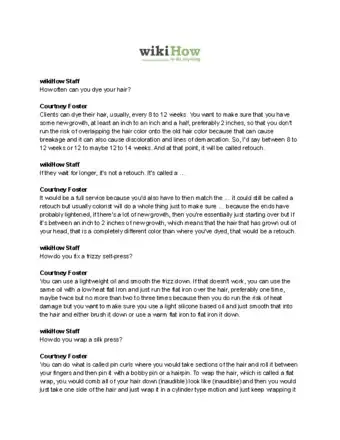
Thanks for reading our article! If you'd like to learn more about making dreads curly, check out our in-depth interview with Courtney Foster.
References
- ↑ http://thirstyroots.com/short-curly-dreads.html
- ↑ http://thirstyroots.com/short-curly-dreads.html
- ↑ http://thirstyroots.com/short-curly-dreads.html
- ↑ http://thirstyroots.com/short-curly-dreads.html
- ↑ http://thirstyroots.com/short-curly-dreads.html
- ↑ https://www.glamour.com/story/how-to-prevent-curls-from-falling-nighttime-techniques
